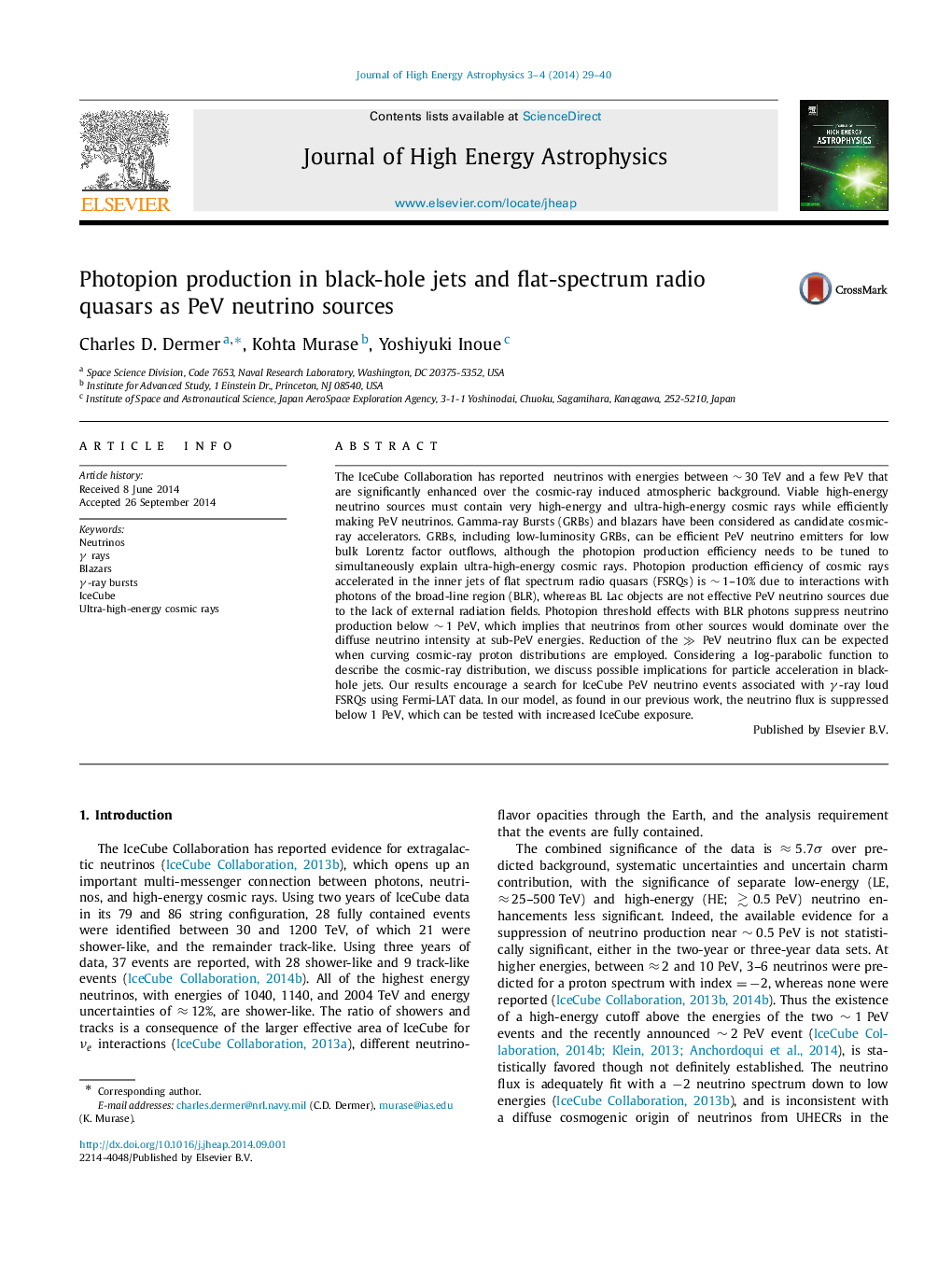| کد مقاله | کد نشریه | سال انتشار | مقاله انگلیسی | نسخه تمام متن |
|---|---|---|---|---|
| 1778662 | 1523710 | 2014 | 12 صفحه PDF | دانلود رایگان |

The IceCube Collaboration has reported neutrinos with energies between ∼30 TeV∼30 TeV and a few PeV that are significantly enhanced over the cosmic-ray induced atmospheric background. Viable high-energy neutrino sources must contain very high-energy and ultra-high-energy cosmic rays while efficiently making PeV neutrinos. Gamma-ray Bursts (GRBs) and blazars have been considered as candidate cosmic-ray accelerators. GRBs, including low-luminosity GRBs, can be efficient PeV neutrino emitters for low bulk Lorentz factor outflows, although the photopion production efficiency needs to be tuned to simultaneously explain ultra-high-energy cosmic rays. Photopion production efficiency of cosmic rays accelerated in the inner jets of flat spectrum radio quasars (FSRQs) is ∼1–10%∼1–10% due to interactions with photons of the broad-line region (BLR), whereas BL Lac objects are not effective PeV neutrino sources due to the lack of external radiation fields. Photopion threshold effects with BLR photons suppress neutrino production below ∼1 PeV∼1 PeV, which implies that neutrinos from other sources would dominate over the diffuse neutrino intensity at sub-PeV energies. Reduction of the ≫ PeV≫ PeV neutrino flux can be expected when curving cosmic-ray proton distributions are employed. Considering a log-parabolic function to describe the cosmic-ray distribution, we discuss possible implications for particle acceleration in black-hole jets. Our results encourage a search for IceCube PeV neutrino events associated with γ-ray loud FSRQs using Fermi-LAT data. In our model, as found in our previous work, the neutrino flux is suppressed below 1 PeV, which can be tested with increased IceCube exposure.
Journal: Journal of High Energy Astrophysics - Volumes 3–4, September–December 2014, Pages 29–40